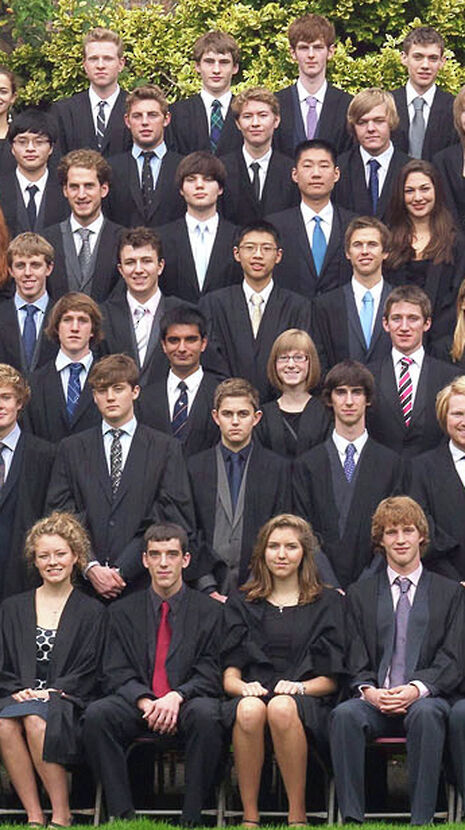Queens’ students decry fresher gender imbalance
Unease at College after fresher intake is found to have 107 men and only 50 women

Students at Queens’ have expressed unease after an unusually high gender imbalance was found amongst the incoming first-years.
As it celebrates 30 years of women being admitted to the College, Queens’ male first-years outnumber their female peers by 107 to 50.
According to one female Queens’ first-year, the gender imbalance had a noticeable effect on the College dynamic. "You definitely do notice it around College. There are fewer girls about, which I’m not really used to. I wonder how many women applied compared to men," she said.
Another said: "I’m not scared or anything, but it’s just pretty weird, especially when we first saw the whole year together."
However, Andrew Thompson, Admissions Tutors for the College, was eager to allay any concerns. "There will always be a variance year on year in the profile of the students admitted to any particular college. Like all Cambridge colleges, Queens’ admits the best students, regardless of considerations of race, gender or social background," he said.
Although a gender disparity is a regular occurrence at science-based colleges such as Trinity and Churchill, Queens’ students have grown accustomed to the gender-balance of its current third-year student population, of which 79 are female and only 72 are male.
Three years ago, Trinity accepted 169 male students and only 80 female, part of a trend which tutors claim is indicative of a lack of female interest than prejudice in the admissions process.
However, Sarah Peters-Harrison, CUSU Women’s Officer, is not convinced. Speaking to Varsity, Peters-Harrison said, "Under new equalities legislation, institutions have an obligation not only to demonstrate that they are not behaving in a sexist manner, individually or institutionally, but that they are actively promoting equal opportunities for both women and men.
"This means that Colleges and indeed the University have an obligation to begin targeting women in their access programs and to strive towards crafting a women friendly atmosphere in what is perceived by many to be an 800 year old gentleman’s club suffering from a bad case of PMS (Pale, Male and Stale)."
Cambridge is used to such criticism. But disapproval shows no sign of receding, considering that between 2005 and 2008 the University-wide gender disparity rose from 131 to 279. These figures are remarkable in the light of almost 300 women at Cambridge’s three female-only colleges.
Charlie Bell, Queens’ JCR President, was keen to smooth out any potential tensions between the students and the College.
"This issue has been brought to the attention of the JCR. We have been granted full access and cooperation from College Officers.
"I am sure I speak for the undergraduate body when I say that Queens’ members are proud of having had 30 years of female students matriculating at this College (a sentiment, I have no doubt, that is shared by the graduates and Fellows), and we would obviously prefer to have a more equal balance of females and males, if possible, in the future.
"I have been assured, and am convinced, that Queens’ has a gender-blind admissions process, and given the recent statistics, the current gender imbalance in the fresher intake seems an anomaly, quite probably driven by applications, with no maleficence or bias on the side of the College.
"I am sure that College, University, and student authorities would prevent any genuine bias against potential female undergraduate students at Queens’."
 News / Cambridge study finds students learn better with notes than AI13 December 2025
News / Cambridge study finds students learn better with notes than AI13 December 2025 News / Cambridge Vet School gets lifeline year to stay accredited28 November 2025
News / Cambridge Vet School gets lifeline year to stay accredited28 November 2025 Science / Did your ex trip on King’s Parade? The science behind the ‘ick’12 December 2025
Science / Did your ex trip on King’s Parade? The science behind the ‘ick’12 December 2025 News / Uni Scout and Guide Club affirms trans inclusion 12 December 2025
News / Uni Scout and Guide Club affirms trans inclusion 12 December 2025 Arts / Modern Modernist Centenary: T. S. Eliot13 December 2025
Arts / Modern Modernist Centenary: T. S. Eliot13 December 2025









